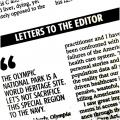
Traffic gridlock around Watford town centre seems to be becoming a regular occurrence. Some people are blaming it on alterations to the traffic light timing at the junction of Clarendon Road with Beechen Grove, but the problem is much deeper than that. In essence, Watford’s traffic has grown to fit the road space available so the network is running at 100 per cent capacity for much of the time. As soon as anything unusual happens and restricts the flow of traffic everything comes to a halt.
It is no surprise that traffic has expanded to completely fill the road space available. For many years Watford has pursued a policy of expanding its retail to become a regional shopping centre. The policy has been successful, but the penalty is traffic coming into the town from far and wide. Then we have the unexpected and unwanted insistence by the Government that Watford adds a whole lot more housing. Our council appears to have no option but to go along with this. As a result, Watford’s population is continuously increasing. On top of this we are developing business parks and office buildings, great for employment, but again more traffic. Add to that the intended expansion of Watford General Hospital, and its role as a regional hospital, and there will be more traffic still.
All these facilities and all this housing means the town has a vibrant economy which brings a lot of benefits, but the scale of it is becoming akin to that of a city. We now even have several city-style tower blocks appearing.
The problem is that whilst we are developing the town to provide the facilities and population density of a city we don’t have the transport infrastructure to go with it. Cities have underground railways, tram and light rail networks, comprehensive and frequent bus high quality bus services and plenty of safe cycle routes. Watford has none of those things, and it will be impossible to add the ones which really make a difference, such as a tram network, to an already highly developed town. As most readers will know, our one significant transport initiative, namely the Croxley Rail Link, was scuttled by politics and several decades of prevarication.
Mayor Peter Taylor is promising some transport improvements to do with cycling, buses, and an alternative to the Croxley Rail Link, but although it is good to see these initiatives I fear they will be a drop in the ocean.
In theory Watford’s bus services could be substantially improved, if enough funding was made available, but buses only work well if cars are prevented from clogging up the roads.
So, what can be done? It would be possible to reduce the amount of traffic in the town by using strong methods such as a congestion charge and workplace parking charges but these would be likely to damage the town’s economy. The economy has been built up on the strength of a car based culture. One can only realistically get people out of their cars if there are attractive alternative transport modes for people to turn to.
Going back to the gridlock, traffic jams are one thing, but gridlock is much worse. If it is purely a jam then it gradually clears as cars leave the front of the queue and continue their journey. Gridlock occurs when cars cannot leave the front of the queue because they are confronted by a junction where there is another queue, and this in turn links back to the first queue. I would suggest that the problem lies in the fact that by definition the ring road is a closed loop. A solution to the gridlock could be to break the loop, probably in more than one place, and at the same time make remaining sections of road two way. This would allow traffic to generally return from its destination, say a town centre car park, by the same route that it went in. There might still be queues but the queues would be able to keep moving.
Breaking the ring road would make it more difficult to go straight through the town from one side to the other, but if people want to do that they would go round the outside, thus reducing the traffic in the town centre as a benefit. If people want to take the shortest route across the town then they could walk or cycle and go straight through the middle.
This is just one idea. There will no doubt be other ideas, but one thing which is for certain is that unless there are radical changes to Watford’s transport arrangements the jams and gridlocks will only get worse as the development of the town continues.
Peter Hutchinson
By email



Comments: Our rules
We want our comments to be a lively and valuable part of our community - a place where readers can debate and engage with the most important local issues. The ability to comment on our stories is a privilege, not a right, however, and that privilege may be withdrawn if it is abused or misused.
Please report any comments that break our rules.
Read the rules hereLast Updated:
Report this comment Cancel